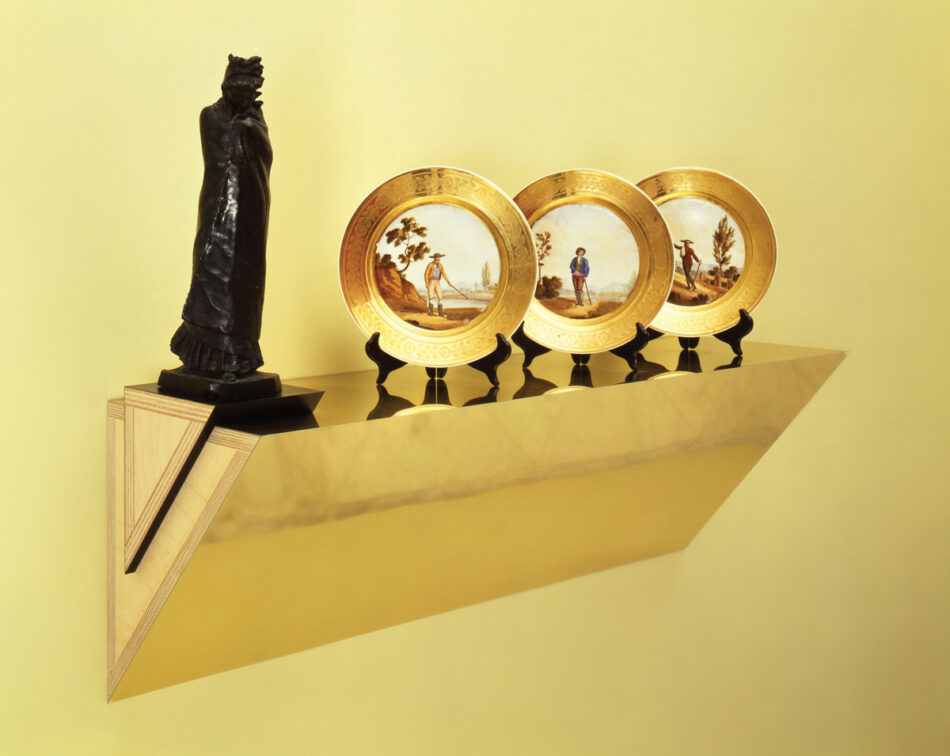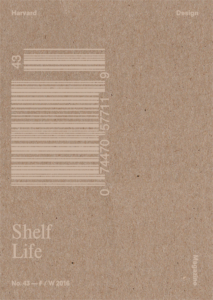Cupboard Love
In the 2008 film Sex and the City, after Carrie Bradshaw and Mr. Big have agreed to marry, Big walks her through their textbook-luxurious apartment. At the conclusion of the tour, Carrie opens the last door to find a walk-in closet. A long, carpeted space lined with frosted-glass cupboard doors, it brings to mind a domestic chapel with a backlit shoe rack as altarpiece. Carrie’s response is orgasmic: “Oh my God. Oh, you did me proud, mister.” Big responds rhetorically: “You like it?”
Rewind to the late 19th century and the conclusion of These Happy Golden Years (1943), the penultimate book of Laura Ingalls Wilder’s Little House series. The protagonist, Laura, is moving into a house newly built by her husband, Almanzo. Exploring it for the first time, she opens “the last door” to discover a pantry—a room fitted with intricate cabinetry dedicated to specific tasks, but also with “empty space for other things as they should come.” Anticipating Big by almost a century and a half, Almanzo says only one thing: “Like your pantry?”
I’ve had strong feelings about storage for as long as I can remember. The first chapter book I read was Little House in the Big Woods from 1932. Set in the early 1870s, the book revolves around domestic details. I loved the celebratory making of the maple sugar and the grisly image of Laura and her sister Mary using a pig’s bladder as a balloon, but most of all I thrilled to the descriptions of the food stowed in the attic and pantry.
“Onions were made into long ropes, braided together by their tops, and then were hung in the attic beside wreaths of red peppers strung on threads. The pumpkins and the squashes were piled in orange and yellow and green heaps in the attic’s corners. The barrels of salted fish were in the pantry, and yellow cheeses were stacked on the pantry shelves.” Laura and Mary played in the attic, using the pumpkins for chairs and tables and inhaling the scent of dried herbs.
To my six-year-old self, the idea of order and containment (and having enough, but not more than you need) was utter perfection. Later in the book there is a visit to a store in the nearby town where “Laura would have looked for weeks and not seen all the things. . . . She had not known there were so many things in the world.” I yearned for such limits and the potential to be made content, as Laura was, by a single piece of candy. The books have subsequently been subject to waves of revisionism, largely emanating from the theory that their actual author was Ingalls Wilder’s libertarian daughter, Rose Wilder Lane, but at the time my infatuation with life on the American frontier went untroubled.

In Constructing the Little House: Gender, Culture, and Laura Ingalls Wilder (1997), Ann Romines argues that Ingalls Wilder’s Ma was likely influenced by the 1869 book The American Woman’s Home by Catharine Beecher and Harriet Beecher Stowe. Featuring a series of diagrams and detailed descriptions of domestic arrangements (“The sides of the stove-room must be lined with shelves; those on the side by the cellar stairs, to be one foot wide, and eighteen inches apart.”), the book claims to be “a sketch of what may be properly called a Christian house; that is, a house contrived for the express purpose of enabling every member of a family to labor with the hands for the common good, and by modes at once healthful, economical, and tasteful.” Beecher and Beecher Stowe equated order with virtue.
Reading the Little House series, I particularly treasured the regular appearances of Ma’s china shepherdess, the Ingalls family’s sole nonfunctional possession. In the first book, Pa, as a Christmas present for Ma, makes a decorated wooden bracket to hold the ornament. Hung on the log wall between the cabin’s windows, the bracket was admired by relatives visiting for the holiday: “Aunt Eliza said that Uncle Peter had made one for her—of course, with different carving.” In By the Shores of Silver Lake (1939), the fifth book of the series, Pa constructed a “whatnot” for the ornament, a shelving unit derived from the French étagère and built according to the instructions of their more sophisticated neighbor Ellie Boast.
“So that’s a whatnot,” said Pa.
“Yes,” said Ma, “Isn’t it pretty?”
“It’s a neat job,” said Pa.
“Mrs. Boast says they’re all the rage in Iowa,” she told him.
“Well, she ought to know,” Pa agreed. “And there’s nothing in Iowa too good for you, Caroline.”
Return to Sex and the City. Toward the end of the movie, post their aborted marriage, Carrie and Big consummate a reunion in the closet. He proposes once more, but this time the promise is her release from fitted-cupboard nirvana back to the open-shelved clutter of her singledom. Carrie doesn’t seek health and economy through storage; she seeks self-expression. The hallowed closet is exposed as a piece of theater rather than a practicality. Accordingly, the set designers of Sex and the City have been asked by some of Carrie’s most ardent fans to recreate both types of closets in their own homes. Order and chaos are no more than style choices.
A YouTube compilation of closet-related clips from the now-defunct MTV show Cribs elaborates on this attitude. A Cribs subject, boxer Floyd Mayweather, sums it up (and demonstrates that love of storage is no longer the province of women): “I get tired of everybody talkin’ about, oh they got this type of closet, they got that type of closet,” and announces, “Well, my closet got aisles, like you have in a grocery store.” In the 150-odd years since the Ingalls family lived in the Big Woods, the conceptual sphere of the showy whatnot has engulfed that of the virtuous pantry shelf.
Emily King is a freelance design writer and curator based in London. Her PhD addressed the dawn of device-independent digital typefaces and her books include monographs of graphic designers Robert Brownjohn and Peter Saville and the creative team M/M Paris. She writes regularly for a variety of publications including frieze, Fantastic Man, and Apartamento.
